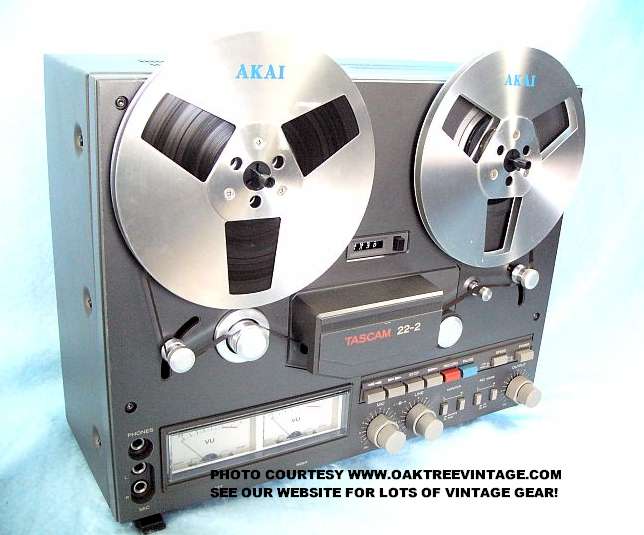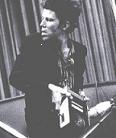Recording Techniques, People Skills, Gear, Recording Spaces, Computers, and DIY
Moderators: drumsound, tomb
-
vbsh
- audio school graduate
- Posts: 14
- Joined: Fri Mar 27, 2015 10:16 am
Post
by vbsh » Fri Mar 27, 2015 11:07 am
Plz excuse my english. Producer Mike Chapman mentions some "pencil erasing" method that he used on Blondie's song "Heart of Glass". I'm struggling for days to understand his technique.
He says: "After the basic track was cut, we'd go through the whole thing and tighten up the kick drum with the snare, by way of pencil erasing," Chapman says. "That meant using a pencil to hold the tape away from the ead and erasing up to the kick drum. If a bass part was ahead of the ick, you could erase it so that it sounded like it was on top of the kick. That's very easy to do these days, but back then it was quite a procedure just to get the bottom end sounding nice and tight."
Source:
http://www.soundonsound.com/sos/jun08/a ... s_0608.htm
Is it like: Chapman was not satisfied with the bass line, so he decided to erase the bass guitar notes between the kick and the snare? He wanted the bass guitar notes to be heard at the same time with the kick and the snare? If so, then why he simply didnt ask Nigel Harrison to make a new bass take (this time playing the bass guitar differently), instead of editing the already recorded bass line in a such complicated way?
Here's a pic I made:

Is it correct?
If it helps, compare these demos of the song and the official release:
https://www.youtube.com/watch?feature=p ... S_6LLam0Qs
https://www.youtube.com/watch?feature=p ... 4vU6XXK5JU
https://www.youtube.com/watch?feature=p ... bnbMMCfyoc
THANKS.[/img]
-
Gregg Juke
- cryogenically thawing
- Posts: 3544
- Joined: Fri Jun 11, 2010 10:35 pm
- Location: Buffalo, NY, USA
-
Contact:
Post
by Gregg Juke » Sat Mar 28, 2015 3:13 pm
Well, for different reasons you can't always re-track parts; sometimes just logistically not possible.
So back in the day, with analog recording and editing as the only option, we had to do things differently. He is talking about manually "spot erasing" certain tracks as the tape was being played back (only one track armed on a 24-track recording). Other techniques included cutting tape (physically cutting and removing sections of tape, not "non-destructively" as is available nowadays), muting and un-muting tracks during an "all hands on deck" mix session, and of course "punching in/out" (same as it is today, but of course completely "destructively," as opposed to today's ease of multi-lane virtual tracking).
Different times...
GJ
PS-- Your English was perfect!
Gregg Juke
Nocturnal Productions Music Group
Drum! Magazine Contributor
http://MightyNoStars.com
"He's about to learn the most important lesson in the music business-- 'Never trust people in the music business.' "
-
A.David.MacKinnon
- ears didn't survive the freeze
- Posts: 3822
- Joined: Wed May 07, 2003 5:57 am
- Location: Toronto
-
Contact:
Post
by A.David.MacKinnon » Sat Mar 28, 2015 5:05 pm
vbsh wrote:
Is it like: Chapman was not satisfied with the bass line, so he decided to erase the bass guitar notes between the kick and the snare? He wanted the bass guitar notes to be heard at the same time with the kick and the snare? If so, then why he simply didnt ask Nigel Harrison to make a new bass take (this time playing the bass guitar differently), instead of editing the already recorded bass line in a such complicated way?
Here's a pic I made:

[/img]
As far as I can tell it sounds like the bass and kick were playing the same pattern together and he erased any spots where the bass was earlier than the kick. By erasing the bass up to the kick hit you can make it sound like the bass and kick are perfectly in time with reach other on every hit. A non destructive way to do this on tape would be to gate the bass and have it side-chained to the kick. Whenever the kick hits the bass gate opens. Doubtful you'd achieve the same level of precision and control though which is probably why the were spot erasing.
-
vbsh
- audio school graduate
- Posts: 14
- Joined: Fri Mar 27, 2015 10:16 am
Post
by vbsh » Thu Apr 09, 2015 3:35 pm
He is talking about manually "spot erasing" certain tracks as the tape was being played back
he erased any spots where the bass was earlier than the kick. By erasing the bass up to the kick hit you can make it sound like the bass and kick are perfectly in time with reach other on every hit.
Gregg Juke and
A.David.MacKinnon, thank you very much to both of you, now I get it. So the picture that I made is wrong. Perhaps I should remove it.
Gregg Juke, you mentioned the right term "spot erase". However, I don't understand this: they worked with 3M M79 24-tr tape recorder, which for those times was quite good (I guess, cause many famous albums were made with it). So, couldn't he switch the machine to a "spot erase mode", where he could manually rock the reels, so that the tape would pass across the erase head and the unwanted spots would be erased,
without adding new signals? Why he needed the pencil? Maybe the machine didn't have "spot erase" mode? Or if you'd switch to that mode, maybe both the erase head AND the record head would still work in some machines?
-
vvv
- zen recordist
- Posts: 10164
- Joined: Tue May 13, 2003 8:08 am
- Location: Chi
-
Contact:
Post
by vvv » Thu Apr 09, 2015 3:51 pm
I have read where grease pencil marks were used to write on the tape to cue where to erase.
Or mebbe that was only for splicing?
-
Scodiddly
- genitals didn't survive the freeze
- Posts: 3976
- Joined: Wed Dec 10, 2003 6:38 am
- Location: Mundelein, IL, USA
-
Contact:
Post
by Scodiddly » Thu Apr 09, 2015 5:15 pm
My guess is that they used a pencil to hold the tape away from the record head, manually scrubbing the undesired area over the erase head.
-
Gregg Juke
- cryogenically thawing
- Posts: 3544
- Joined: Fri Jun 11, 2010 10:35 pm
- Location: Buffalo, NY, USA
-
Contact:
Post
by Gregg Juke » Sat Apr 11, 2015 10:53 pm
What Sco and A. David are describing is how I've heard of it-- the pencil momentarily inserted, but I seem to remember another method with scrubbing the reels-- I don't know; never did it either way myself. Of course grease pencils were used to mark edit points for cutting (I did a _lot_ of that), but there was one guy I knew that would edit drums (live drummers, not some sequenced or looped thing), and he didn't seem overly fastidious or meticulous about it, either... Tape would roll on playback at full speed, he'd be half listening while doing something else and notice an edit point ("in") and a second one ("out"), and momentarily blip the grease pencil on the tape as it rolled by. Sometimes he'd just drop the pencil in, let it make a continuos line until his out-point (all while tape was rolling; no slow back and forth "scrubbing"), then just make cuts at the appropriate points and !voila! Perfect edit. On drum tracks (!). This always amazed me, as I got pretty good at tape editing, but I'd have to slave over a vocal take or a news soundbite to get everything "perfect," and I'd still mess it up, so I had to save every scrap of tape in case I had to recreate the original from square one. I don't think I ever would have had the stones to do that with drums (though I did make a couple of cool tape loops a few times).
GJ
Gregg Juke
Nocturnal Productions Music Group
Drum! Magazine Contributor
http://MightyNoStars.com
"He's about to learn the most important lesson in the music business-- 'Never trust people in the music business.' "
Who is online
Users browsing this forum: No registered users and 60 guests



